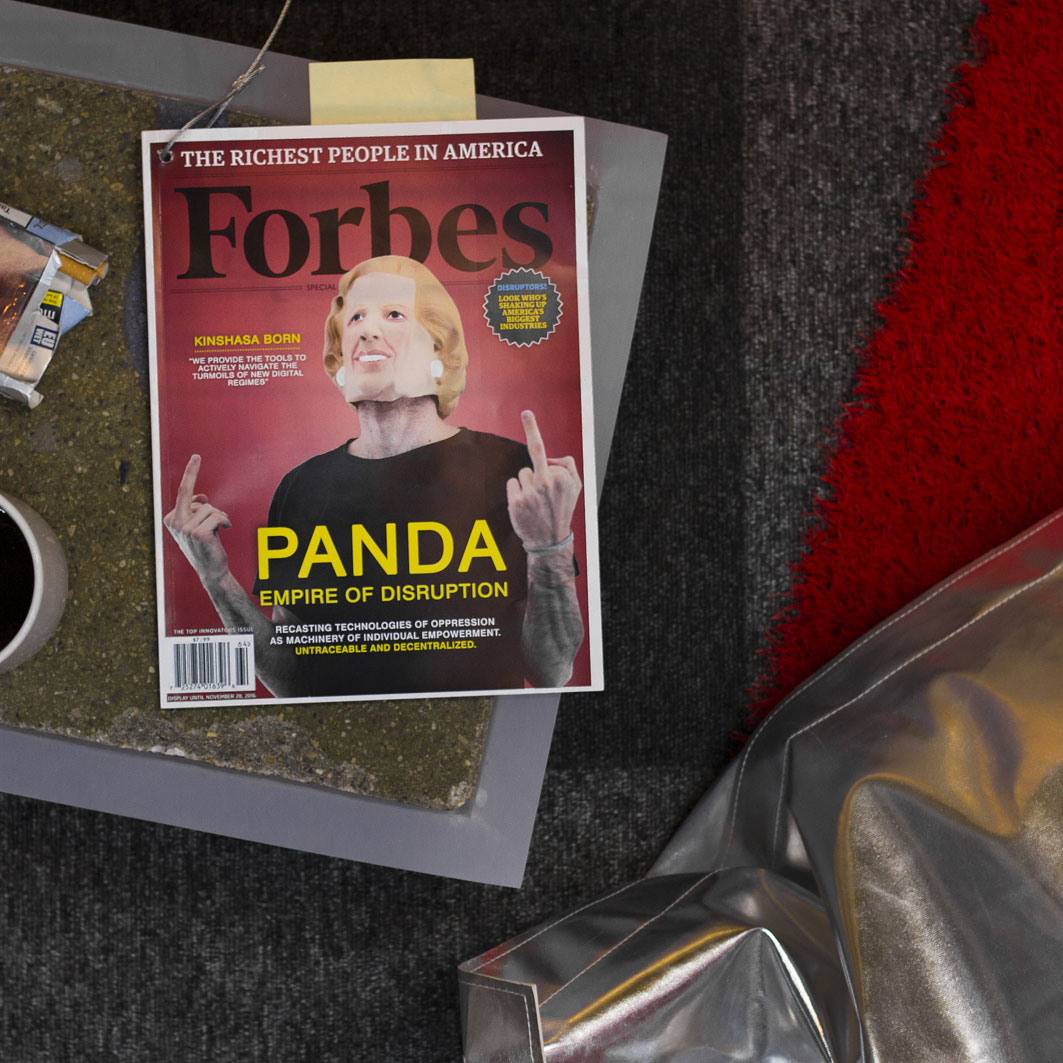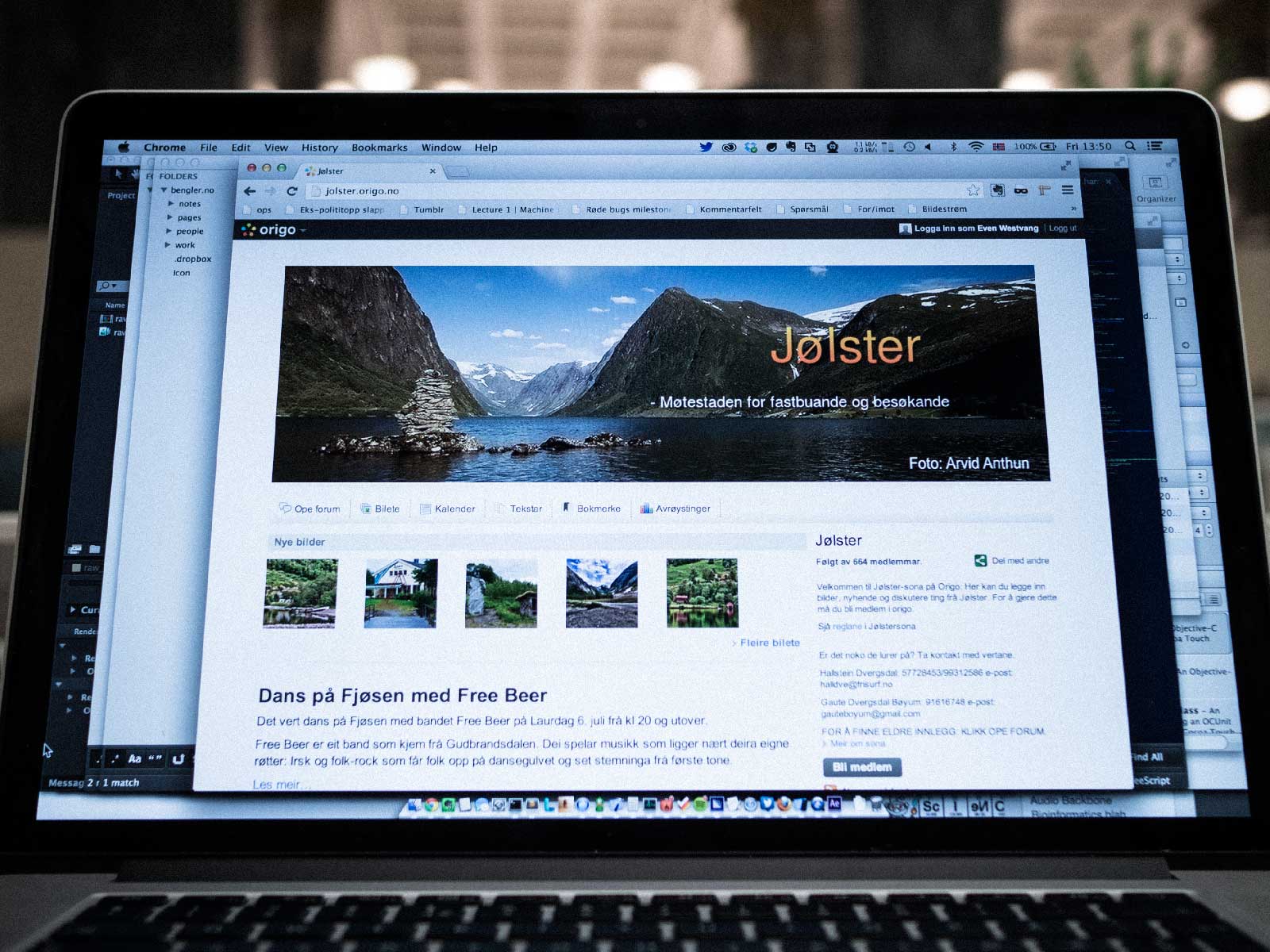Project
Social publishing
Initiated
2006
Population
350k users (2013)
Verified organizations
5431
Posts published
0.5m (2013)
Site
After Underskog we were thinking about how social software could be used to to cut across striated social structures and build inclusive digital commons. Common ground for new kinds of discussions. At the same time media organizations were looking at what we had accomplished and wondering how they could get some of the same "engagement" on their properties.
We elected to work with A-pressen, now Amedia, the country's largest group of local newspapers. There were several reasons for this, but most important was the opportunity to try out our ideas on local communities. As did the opportunity to work with local press to embed such a system in regional comunities.
New fundamentals
Both the authoritative position of news media and the granularity at which they work is predicated on means of production: their printing press. On the internet publishing itself is trivial. A new position needs to be found. With Origo we wanted to resituate the news organization in the information flow generated by users.
Instead of contributing directly to the website and under the moderation of the newspaper, users would be free to establish their own publics, moderate them on their own terms and freely offer content back to the news organization.
We didn't need to focus on the needs of the newspapers, but rather the ways we could help people with real world stuff they they are trying to accomplish or interests that they want to share with others:
They're coordinating a soccer team or a church choir. They're running for election. They're trying to get their municipality to build a better school road. They're collecting stories of their town from the 1950s.
What to build?
So what could we build that might be useful for these people:
- Group collaboration tools
- Customizable websites with public facing information
- Calendaring
- Social networking for friends only posting and socially aware feeds
- A model of civic society – organizations and roles, the ability publish in official capacity
People would then be free to mark information as not only public, but also available for newspaper aggregation. It would then be collected by the local newspapers based on location and reused online and in print.
For the newspapers we also wanted to foster a sane climate for discussion, so we allowed pseudonyms but collected authenticated mobile numbers on registration. We built commenting fields. Connected the journalists profile pages on Origo with their bylines on their stories.
What worked?
A sizable population of users took to the service and used it to build places that in passing could be taken for a living moodboard from our planning phase.
It's been used as a gathering place for an island community in Lofoten.
Pensioners in the mountainous region of Sogn og Fjordane used it to endlessly debate poetry and ethics – some splitting off into a fraction when they couldn't agree on moderation policies.
We saw politicians raise issues, have them promoted by the paper with citizens responding and the politicans taking suggestions back to their meetings. All in a few hours.
For the papers that engaged with their users Origo generated thousands of pages of newsprint.
In brief:
- Usage – Origo was launched concurrently with Facebook and has still found a sizable, stable audience.
- Thematic photo sharing for groups – we built good upload and metadata tools. People gathered to share
- Calendaring – the pitch is simple: publish your events, the newspaper publishes it online and prints it in the paper, people show up at your concert.
- Newspaper affiliated sites – the newspapers used Origo to build blogs either completely owned or affiliated with the newspaper
- Organizations – The Norwegian Labour Party uses Origo for all of their local and county chapters
What didn't?
First of all: Origo worked well for a lot of people and a lot of the time it worked for exactly the usages we intended. Anecdotally and incidentally I have a group in my neighbourhood in the middle of Oslo using it to organize against property development. Yet there are things we could have done differently or wished we knew about when we started.
Cognitive model
Origo has too many moving parts:
- It's a multi-domain service with a main site for filtered feeds and social networking
- The content containers of Origo are both for publishing and for different modalities of closed collaboration. They therefore need membership levels, publishing rights and visibility settings.
So what do you call a public website that's also a fairly extensive internal collaboration tool? Note to self: When you're struggling to find nominally intuitive naming for central concepts in your service it's probably something of a red flag that you need to reduce complexity.
Status as boundary object
Hang in there, we're not being obtuse – it's an accurate term. Origo needed to be commonly held by a number of distinct groups, but for very different reasons. Over time it should align these parties towards goals beneficial to local community and news organization alike. The issues:
- Origo as an infrastructure was a tool for possibility for value creation – too abstract a proposition for bean counters worried about their bottom line.
- For journalists Origo meant a levelling of the field – seeing eye to eye with their readers is not why people necessarily enter the profession of journalism.
- For some people, a vocal minority, the local newspaper is a manifestation of a power structure that has hounded them for an eternity. Tools for dialogue are an opportunity to grumble at the power.
Origo should have been a mechanism for meaning making, participation and alignment in a community, but was too ill defined and most importantly too contested to function as intended. A tool that was held either by users or news organizations would have had more success.
Power structures
Building social software that people use to fulfill their own goals is easy. Your actants are similarly motivated and are more or less aligned. But beware, when taking tropes from social software and mixing in institutions with 100 year histories, workplace politics, local community power structures and financial logic you may find the game on the ground somewhat messier.
Technology
We built Origo as a monolithic no-holds-barred Ruby on Rails app. It quickly ossified around us as we moved forward. We now build slim, loosely coupled service oriented architectures. That's better.
Status
If Underskog was the album we recorded in our folks basement, Origo was our difficult second album where we signed with a major and flew in a symphony orchestra from Prague.
We learned volumes from building Origo. Mostly about focus, simplicity and clarity of purpose.
Our share in Origo was sold back to Amedia in 2012. At the time of writing (May 2013) the service counts 355432 members – just shy of 10% of Norway's adult population.
Other projects
-

PANDA
Supercolluder for the gig economy
-

Principal Components
Machine learning in search of the uncanny
-

OMA Website
Simple surface, intricate clockwork
-

Terrafab
Own a small slice of Norway
-

Intersections
Laser sintered topological maps for cars and social scientists
-

Mapfest!
Helping liberate Norwegian geodata
-

Underskog
Friendly community for the Norwegian cultural fringe.
-

Chorderoy
Efficient text input for mobile and wearable devices
